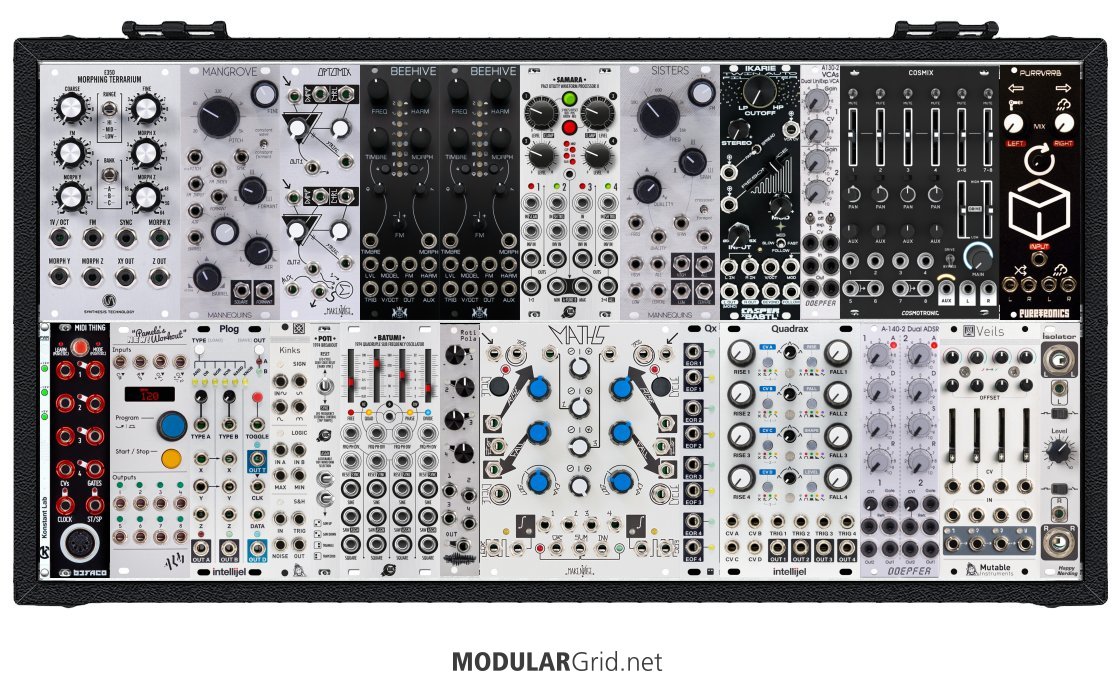This was getting close, so I opted to throw down on it. Vide:

The layout is still the same, although I put the audio out on the bottom row so that all cables to/from the rig will be on the lower tier. Otherwise, this retains the "audio up/mod down" layout.
I reworked the audio row considerably. The Morphing Terrarium and Mangroves now are set to submix (or not) through the Optomix LPGs, and I replaced the Plaits with two 3rd-party builds of it. But these now are set to feed through the Samara, and the LPGs can ALSO go through this for various mixing + waveshaping transformations. Filters next, then I tossed in one of Doepfer's new micro series dual VCAs (one per VCF) before the stereo performance mixer. And "spring" reverb got added, with the Purrtronics Purrvrrb spring emulator; you'll likely feed this through the mixer's AUX out and then return it to one of the non-AUXed stereo channels. Once the audio mix is set, this then feeds down to the transformer-isolated stereo out.
Modulation row starts with a little 1 hp sliver...that's a Konstant Labs PWR Checker, gives you visual feedback on your power rail status. VERY useful as an early warning if something might be going awry with your P/S. Then starting with the Poti (the expander for the Batumi), things get entertaining. I put the Roti next to this so that you have it handy as an inverting mixer for the Batumi specifically, and anything else in general that you might mix with it. This allows fast programming of weird, nonrepeating LFO curves. I then paired the Maths and Quadrax by putting the Qx between them so that they can actually play off of each other if desired. A dual ADSR follows for your audio VCF/VCA purposes, and there's one of Mutable's new 10 hp Veils revisions there so that if you need any of it for audio, it's perfectly situated...and if you need them for modulation level control, they're convenient for that, too.
What's nice about this is that it's turned out that you have a solid audio path and a solid modulation complement...but in both of those paths, you can get VERY complicated with your patching and turn each row into its own gigantic "composite module" if you felt like it. In the end, this now seems to be a solid instrument...in a very real sense!

